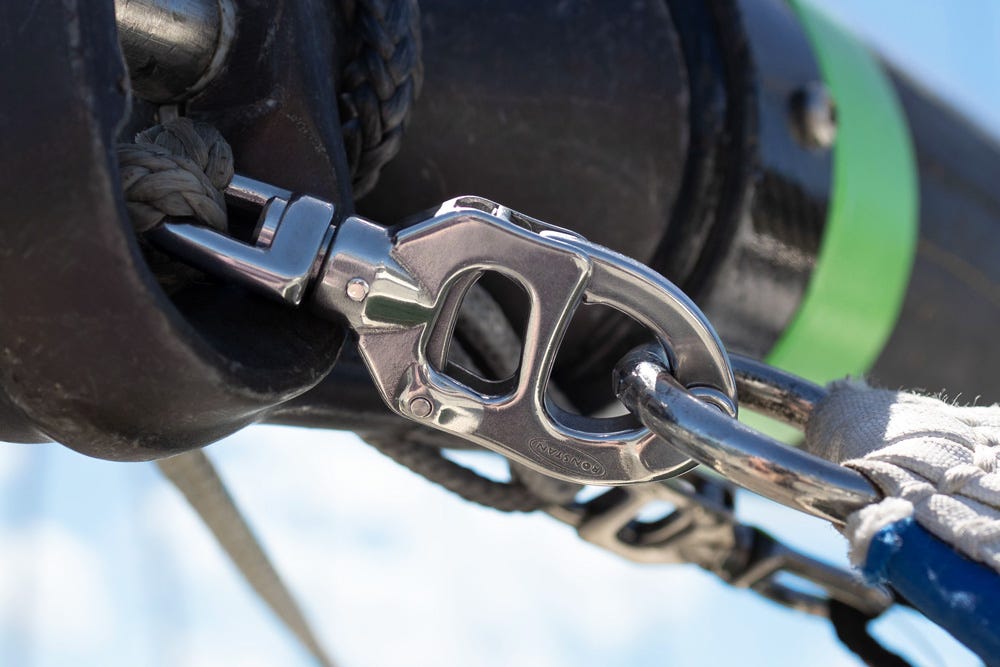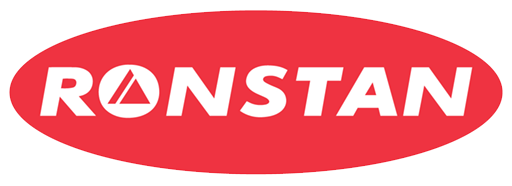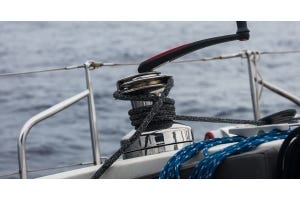
How to Choose: Triggersnap™ or Snap Shackle?
Choosing between a D-shackle and a snap shackle? Easy. However, choosing between a standard snap shackle and a Triggersnap™ can be a more nuanced decision, often used in similar applications or even as direct substitutes for each other. Although there are times when either is suitable, there are also situations when one may have a distinct advantage over the other. As such, it is important to consider the differences between the two when deciding which will be the correct choice for a particular application.
Triggersnaps™
Compared to a standard snap shackle, Triggersnaps™ provide unique functional advantages such as single-handed operation and the ability to release under load. They also typically boast higher working loads for a similar size shackle and feature a smooth exterior that will not get snagged on loose lines or halyards. Depending on the application, the Triggersnap™ functionality could be vital for optimal performance or merely an extra benefit. Sailors frequently opt for a Triggersnap™ to perform tasks like handling the spinnaker tacks, sheets, and guys, where the ability to release under load is crucial (always use a release spike when opening a loaded shackle).
Snap Shackles
Not to be overlooked, standard snap shackles feature a different set of capabilities than their trigger-actuated counterparts. Snap shackles are available with a fixed bail, swivel bail, and a pin shackle bail. We also offer trunnion snap shackles which have the ability to articulate in two planes (swivel and side-to-side), increasing overall versatility and safety for off-axis loads. The variety of bail options make Ronstan snap shackles a good solution for many boats and applications. Snap shackles also have a larger hasp clearance than a similarly sized Triggersnap™, allowing for attachment to larger diameter connections, and are fully serviceable with a replaceable plunger pin and spring system.




Triggersnaps™
Pros:
- Single-handed operation.
- Ability to release under load.
- Smooth exterior profile will not get snagged on lines or halyards.
- Working load to size ratio is typically higher on a Triggersnap™.
Cons:
- Generally higher cost.
- Swivel only, no fixed option or trunnion option.
- More complex mechanism reduces serviceability in the future.
Best for: Applications that require release under load, single-handed operation, or the fastest possible detach/reattachment.
Snap Shackles
Pros:
- Versatility, available with fixed bail or trunnion articulation.
- Serviceability - available pin & spring replacement kits.
- Larger hasp clearance attaches to larger diameter connections.
- Generally less expensive than Triggersnaps™.
Cons:
- Two-hands required to operate.
- Can take slightly longer to open and close.
- Outside profile is less streamlined.
Best for: General use, non-urgent adjustments, and whenever a trunnion articulation or fixed connection is required.












